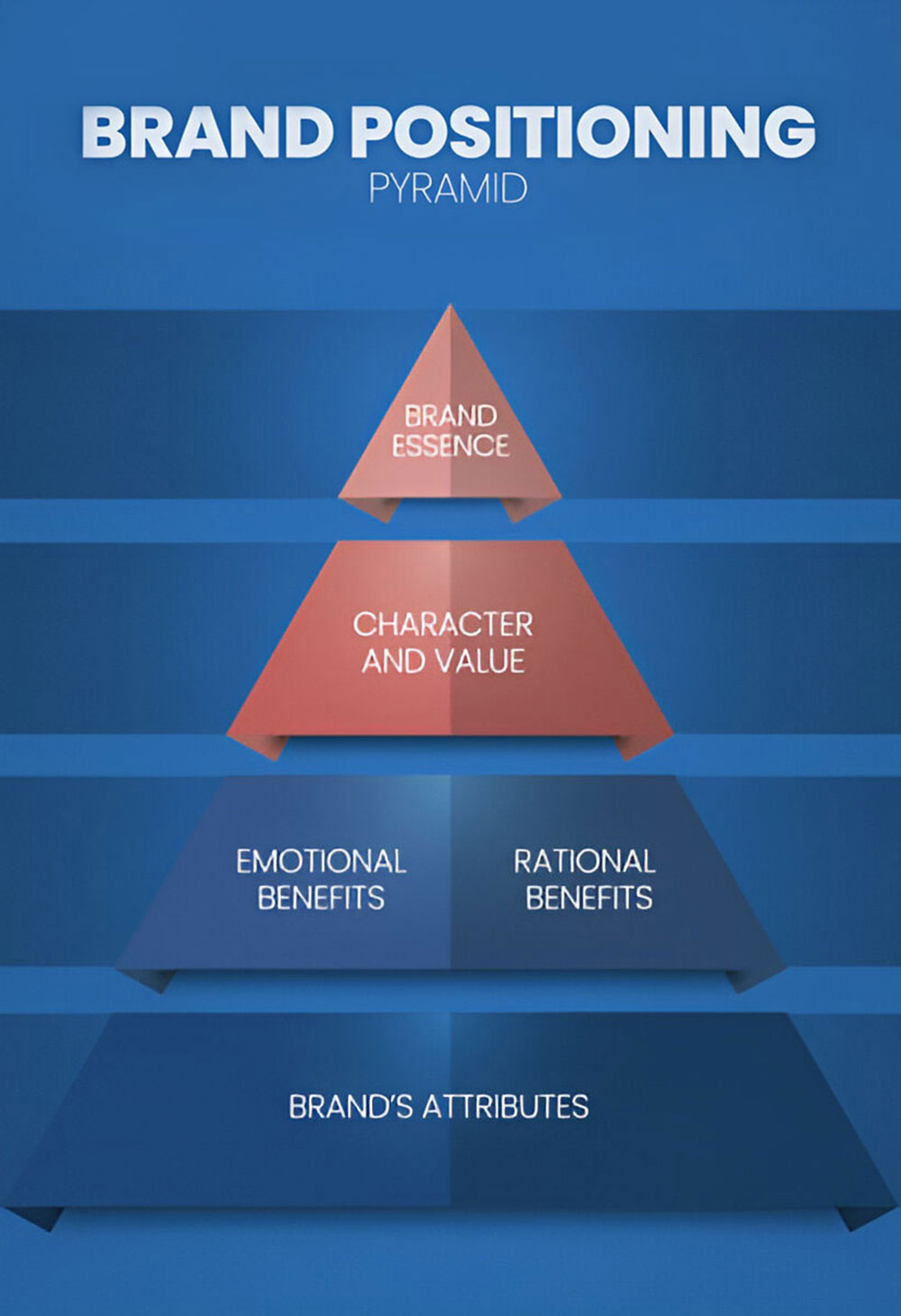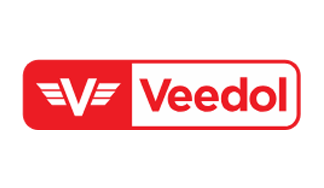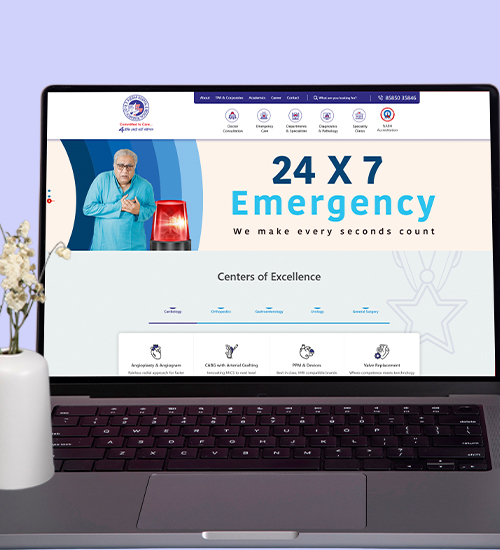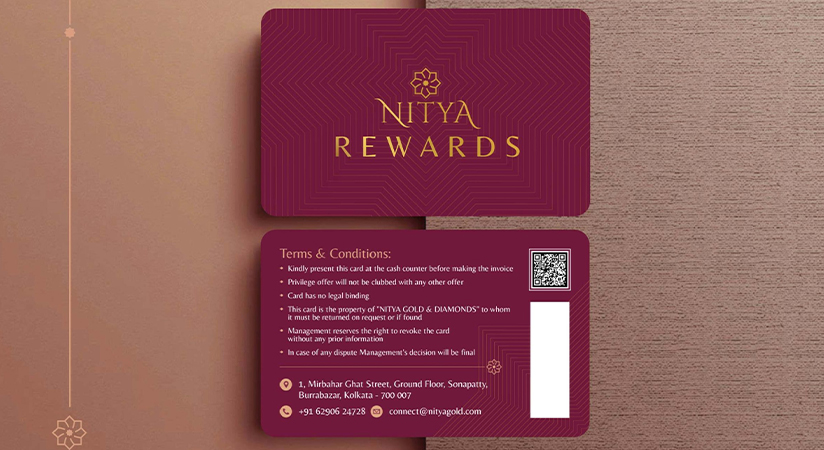Brand Strategy
We at PromotEdge excel in delivering comprehensive brand strategies crafted to your needs and requirements. Whether you’re an established brand entering a new market or a startup carving an identity of your own, ideally the first approach for any new brand would be to define its positioning and way forward strategy. Strategy will help you build the foundation for your future marketing and communication efforts. Be it brand positioning, creating differentiated identities, building brand architectures, tactical plans, to media planning and execution, we have a solution for all your strategic needs.


As an integrated marketing cum advertising agency, we craft brand strategies that resonate at every touchpoint while connecting seamlessly with your audience. Whether you plan to launch a new brand or revamp an existing one, our team will provide the nimbleness of an in-house marketing department. We will plan, build, and manage all aspects of branding and communication, to ensure you are on point, every time.
Ready to explore more? Scroll through our diverse range of services and discover how we can elevate your brand. Feel free to reach out to us; we’re here to turn your marketing vision into reality.
Creating an identity that speaks before you do











At a brand’s foundation lies its core purpose. Brand positioning is a discovery exercise that establishes brand guidelines, serving as a primary reference for defining its identity. This process aligns core values with the brand’s vision, mission, and journey, uncovering the essential reason for its existence. It reveals a purpose that not only remains relevant over time but also makes the brand’s journey meaningful for the long term.
Read MoreIt is a strategic exercise programmed for parent companies or brands managing multiple subsidiaries or sub-brands. In this exercise we conduct comprehensive audits of all brands under one group, aligning narratives, and crafting distinctive identities flowing from the top. The brand architecture exercise involves deriving a cohesive structure via workshops, ensuring shared goals while maintaining individual brand distinctions. The ultimate goal is in translation results in a comprehensive architecture manual, reshaping brand identities and fostering a unified communication approach for the entire brand group.
Read MoreThe brand’s vision and mission represent its fundamental purpose. Initially defined to clarify the brand’s reason for existence, they naturally evolve over time as the brand grows in scale, speed, and impact. Greater ambitions and expanded goals often shape an updated vision and mission for future achievements. To refine these elements, we study the brand’s growth journey, its contributions in financial, organizational, and social spheres, and its future goals. The vision and mission are crafted to align with the brand’s core values and positioning, sometimes developed alongside the brand positioning process.
A brand key model represents the brand to the end consumer, conveying its essence through the main elements that define it—core strengths, operational environment, target audience and their perceptions, insights connected to the brand, key offerings or benefits, values, beliefs, personality, RTBs (reasons to believe), and differentiators. This exercise is particularly effective for consumer-facing brands.
Whether you’re a B2B, B2C, or D2C brand, you need diverse marketing strategies for various goals at different times. From GTM (go-to-market) strategies and brand launches to building salience or executing tactical sales initiatives, each approach influences campaign communication and rollout. As an integrated agency, we begin by understanding the brand’s core, crafting a plan that aligns with its short- and long-term strategy. Our approach not only drives the campaign’s direction and defines brand communications but also assists in planning the entire execution process.
An in-depth analysis of the audience and their response to the brand informs the development of targeted marketing and communication plans, forming a key part of the engagement strategy. Whether it’s a BTL (below-the-line) exercise for one-on-one interactions or a larger-scale digital approach across territories, we tailor our strategy around budget, offerings, objectives, and goals. These activities often follow brand awareness efforts, enhancing brand consideration among audiences. This second level of engagement allows the target audience to experience, learn, and connect more deeply with the brand.
Media evaluation and planning are essential tools for any brand. Selecting the right media channels directly impacts brand relevance; what works for a B2B company might not suit a mass-market brand, and D2C businesses often prioritize a strong digital presence. Media choices should align with the target audience—for example, a Gen Z-focused brand would benefit from visibility on Instagram, while a brand targeting mothers may find relevance in sponsoring popular shows within that demographic. Geography, territory, and availability are also critical considerations. With each brand operating within specific budget constraints, it’s crucial to plan resources effectively to maximize impact. Our extended team collaborates to create a comprehensive 360-degree media plan, encompassing ATL, BTL, and digital strategies—a solution for all your media needs.
Understanding and mapping the target audience is fundamental to any brand strategy. Without insight into how the audience perceives the brand, category, and their needs or comprehension levels, it’s challenging to carve out a niche. An in-depth study allows us to shape a tailored approach—whether the brand should be positioned with a unique differentiator or built as a competitive “me-too” gaining market share from close competitors. The TG mapping is often done as a part of a bigger exercise, whether brand positioning, brand architecture or marketing strategy. It defines the audience’s usage and attitude and acts as a study material for all future studies. It is also highly insight driven and helps in gaining knowledge about both the brand and category.
A customer journey outlines the path through which the brand connects with its audience, creating a pathway of discoverability. Aligned with the sales funnel, it identifies points where customers can learn about the brand. For mass brands, whether B2C or D2C, key awareness channels include outdoor, print, TV, and digital media, while B2B brands often leverage print and digital for brand visibility. In the consideration phase, longer-format media channels provide deeper brand insights. For driving trials, more personalized approaches like BTL media, online offers, and incentives prove highly effective. The customer journey aligns with brand objectives and serves as a foundation for media planning.
To remain relevant, every brand must establish a strong social media presence. Digital media is a powerful tool that helps brands carve out a niche. Once a brand’s core values and purpose are clearly defined, we craft content and strategy to effectively build its narrative and strengthen audience relevance. Content serves as a bridge between brand values and the audience, simplifying the brand’s message for platforms like Meta, Instagram, X, LinkedIn, and YouTube. Our content strategy supports brand goals—awareness, education, engagement, and sales—and lays the foundation for larger digital activations, influencer campaigns, celebrity partnerships, and brand collaborations.
Research is essential to any brand planning or strategy exercise. Whether conducting online secondary research to understand the category, competition, and communication, collaborating with report agencies, performing primary research with larger research firms, or using simple dipstick studies to gauge audiences or markets, research is fundamental to gathering data and insights. Knowledge is power; without a deep understanding of core audiences, markets, and competitors, we cannot excel. With this in mind, research is a vital part of our brand strategy process.
Where Every Logo Tells A Success Story
Our 200+ Collaborations.
Empowering Diverse Industries With Integrated Marketing Solutions

IPO and Listed Companies
Branding contributes greatly to the success of IPO (Initial Public Offering). However, founders often fail to analyze the full potential of a purposeful brand strategy and miss marketing opportunities. Companies are not up against just one or two competitors in the share market; the number is pretty overwhelming, and moreover, not all brands are of the same size. Depending on the companies and investors, IPS can be categorized in different types. For example, small and medium enterprise (SME) IPOs and mainboard IPOs.

Industrial Machinery & Equipment
To thrive in India’s crowded industrial market, which risks becoming commoditized, it’s no longer enough to just show up. You need to be seen, to be known, and to matter. A strong brand identity slices through the noise in cost-conscious, performance-driven markets. A solid industrial brand isn’t just about consistency—it’s about trust. When decision-makers see your credibility, they come back.

Professional Services
The world of marketing for professional service can seem a bit vague. Unlike tangible objects, such as fashion, lifestyle, FMCG, or consumer durable, service can’t be seen or touched. So how can firms and industry professionals overcome these crises and build reputations? Professional service providers have relied on brand reputation to attract potential customers for ages. In today’s competitive Indian landscape, where thousands of newcomers are trying to make their way and build recognition for themselves, companies and experts are in dire need of developing a unique brand strategy to create differentiation and build reputation.

Fashion & Lifestyle Brands
We belong to a generation where gaining and retaining attention has become a luxury, especially for Fashion and Lifestyle brands. The constant stream of posts, updates and notifications overwhelms users, making it difficult to fully concentrate on a single content. The rapid change in fashion trends with new designers and online retailers emerging also almost everyday acts like adding fuel to the fire. Thus, building a strong brand identity isn’t merely a business tactic; it’s essential for survival and growth.

Real Estate
The real game of real estate business is the Brand Strategy. We at PromotEdge excel in delivering comprehensive brand strategies for realtors to create an engaging narrative.

Real Estate
The real game of real estate business is the Brand Strategy. We at PromotEdge excel in delivering comprehensive brand strategies for realtors to create an engaging narrative.

Construction & Building Materials
The construction and building materials industry in India is one of the rapidly growing sectors in the present day. Factors like urbanization, infrastructure development, and government initiatives are playing major roles in building a promising future with a potential for future expansion. However, with this growth spurt, comes high competition amongst the establishments who are eyeing to capture the market and make an unforgettable presence in the sector.

Fashion & Lifestyle Brands
We belong to a generation where gaining and retaining attention has become a luxury, especially for Fashion and Lifestyle brands. The constant stream of posts, updates and notifications overwhelms users, making it difficult to fully concentrate on a single content. The rapid change in fashion trends with new designers and online retailers emerging also almost everyday acts like adding fuel to the fire. Thus, building a strong brand identity isn’t merely a business tactic; it’s essential for survival and growth.

FMCG & FMCD
India is a diverse nation with a rich culture and billions of population making it one of the largest consumer markets. A good brand strategy is what can help you capture the Indian fast moving consumer goods and durables sector needs. Many brands like Mamaearth, Patanjali, ITC, and Nestle have been successful in understanding the pulse of their audience, and have created a name that makes them different from the crowd.

Professional Services
The world of marketing for professional service can seem a bit vague. Unlike tangible objects, such as fashion, lifestyle, FMCG, or consumer durable, service can’t be seen or touched. So how can firms and industry professionals overcome these crises and build reputations? Professional service providers have relied on brand reputation to attract potential customers for ages. In today’s competitive Indian landscape, where thousands of newcomers are trying to make their way and build recognition for themselves, companies and experts are in dire need of developing a unique brand strategy to create differentiation and build reputation.

Sports Leagues, Teams and Players
In sports, branding creates a long-lasting identity. It’s how fans can remember and differentiate a franchise, club or team from the other. A good brand strategy adds a personality to the brand and reveals the human side that the audience can connect with. In the sports industry, success is not measured by how many matches a team has won, it’s how the team has connected with the audience. Sports organizations generate revenue from sponsorship, broadcasting rights, ticket sales, merchandise, and advertising opportunities. However, if they can’t engage with the audience or are unable to draw enough audience attention, they may not get enough sponsorship or collaboration opportunities, leading to a major loss.

Industrial Machinery & Equipment
To thrive in India’s crowded industrial market, which risks becoming commoditized, it’s no longer enough to just show up. You need to be seen, to be known, and to matter. A strong brand identity slices through the noise in cost-conscious, performance-driven markets. A solid industrial brand isn’t just about consistency—it’s about trust. When decision-makers see your credibility, they come back.

IPO and Listed Companies
Branding contributes greatly to the success of IPO (Initial Public Offering). However, founders often fail to analyze the full potential of a purposeful brand strategy and miss marketing opportunities. Companies are not up against just one or two competitors in the share market; the number is pretty overwhelming, and moreover, not all brands are of the same size. Depending on the companies and investors, IPS can be categorized in different types. For example, small and medium enterprise (SME) IPOs and mainboard IPOs.
Client Happiness Speaks Volumes
Elevating Your Identity through Strategic Brand Strategy
Our work commences when we acquire thorough knowledge about the brand, category, processes, consumers, objectives, and goals. We immerse ourselves in the brand to ensure alignment and a shared perspective.

Defining the Purpose
At the outset, we dedicate time to understanding the brand, its creators, vision, and goals. We align strategic requirements with the brand’s foundation, and derive in a clear purpose for our endeavour.

Research
Through primary and secondary research, we view the brand from the perspectives of key stakeholders, employees, and consumers—individuals who directly and indirectly influence and shape the brand’s existence and objectives.

Category Mapping
We conduct an in-depth analysis of the brands in the category (competition direct and indirect) by studying their strategies, communications, and tonalities. This process allows us to identify commonalities, pinpoint gaps, and help us in building differentiation for the brand. The insights we gain help us define our course of action.

Knowing the Audience
Research and category mapping enable us to grasp an understanding of the target audience and analyse the communication points which resonate with them. Additionally, we engage in conduction face to face research, dipstick studies to uncover potential unmet needs that can be leveraged to establish resonance for the brand.

Deriving the Approach
The gathered information is synthesised to formulate a strategic approach encompassing macro and micro-level brand strategies, which then evolve into marketing and communication approaches essential for the brand’s evolution. This culmination of studies and hypotheses usually takes shape through collaborative and interactive workshops with the brand custodians.

Creative Rendition
Whether creating an identity or deriving brand communication, the end goal of each strategic endeavor is to craft a visual representation for the audience, which helps them to connect, understand and is relevant to them. This culmination serves as the final step in the strategic exercise, encapsulating the entirety of the journey.
Elevating Your Identity through Strategic Brand Strategy
Our work commences when we acquire thorough knowledge about the brand, category, processes, consumers, objectives, and goals. We immerse ourselves in the brand to ensure alignment and a shared perspective.
Importance of Brand Strategy
One
Wins over customers’ emotions
When someone makes a purchase, they don’t just buy the product; they also buy the story behind it. Creating a brand strategy after doing thorough research on your customer behaviour and preference will help you connect with your audience emotionally.
Two
Builds Strong Brand Presence
For brands that are competing with many companies offering the same product or services, an effective brand strategy creates a positive brand impression. It allows your customers to differentiate your brands from their competitors and increase your overall brand presence.
Three
Improves Loyalty and Customer Retention
Delivering good quality products and services is not enough; businesses need to create a recognisable and trustworthy identity. If customers feel confident in the brand, they will be more likely to be loyal and repeat purchases. Brand strategy helps companies to maintain consistency in their experience and marketing approach.
Four
Communicates Your Values
Effective communication is fundamental to marketing success. Whether you are in the real estate industry, the FMCG and consumer durable sector or in the fashion and lifestyle field, brand strategy helps to communicate your values to their customers. Godrej Properties, Lifebuoy, Santoor, and Nykaa are a few popular brands dominating their respective industries in India.
Case Study
Got Questions?

-
Why is brand positioning important for a new brand?
Ans.Brand positioning sets the tone for the brand. It defines its purpose, gives it value, reason to exist and a direction to move ahead. It culminates into a brand book which is a definition of the brand, its core, vision, mission, and acts as a guide to move forward. A brand positioning exercise is relevant for a long period of time, and it becomes the foundation on which the brand is built, keeping cognizance of the category, competition, and consumer.
-
Are brand positioning or architecture exercises relevant for an old or existing brand?
Ans.Irrespective of the brand’s age, it can undergo brand positioning or architecture exercises. The positioning activity defines the brands’ identity and purpose, and the architecture defines the purpose of parent company and brand and its extension to the subsidiaries. Both the activities are generally undertaken to meet specific needs for e.g. building communications for awareness, increasing base, capturing new territories, or simply building brand equity. Whatever the need we have a customized solution for every brand as per their structure and requirements.
-
Is strategy and communications inter-connected?
Ans.Yes and No. Strategy defines the purpose, the tonality, and the objective of any communication; it acts as the pillar on which communication is built and that helps it to be more objective and relevant for the audience.
However, there can be communications, which are agnostic of any strategy. However, that makes them less purposeful. Generally, even communication related to CSR or HR should have a common goal, theme, orientation which is connected to an overall brand strategy.
-
Is strategy exercised relevant for B2B companies or is it only for B2C companies?
Ans.Strategy exercises are relevant to both genres B2B, B2C and even D2C irrespective of the business module or channels. Strategy exercises solve business problems and give solutions related to marketing, branding, operations, and communication. It is a holistic approach for any brand which defines and gives a way forward solution to solve certain problems.
-
Is strategy different for B2B from different from B2C?
Ans.Strategy exercises are not only different from category to category, but they are also different from business to business. Our strategy exercises are personalized and custom fit as per the requirements of our client. Whether it be a consumer-led business or a stakeholder driven enterprise, we derive the steps to follow for an exercise after thorough conversations with the brand custodians.
-
How is research part of a strategy?
Ans.Research is the foundation of every strategy exercise. Without studying historical data and trends it is never possible to achieve insights or understand a category in depth.
While secondary and online data becomes the building block for any strategic exercise, the primary research with the brand custodians, stakeholders, associates, and audience gives us an opportunity to gain wholesome knowledge about the category, competition and where the brand stands in the entire gamut. Primary research often helps us in gaining insights which makes us create approaches which are more relevant to the audience and identify need gaps that the brand may solve or derive a differentiated positioning which makes the brand stand out.
For our strategy exercises we have collaborations with specialised individuals or research agencies who are experts in the field and can conduct the research on behalf of the client, in collaboration with our planning team, to derive a holistic solution.
-
Are strategy exercises need to be done independently or a brand stakeholder also need to be involved?
Ans.Every strategy exercise is done mutually between the client and agency. It cannot be done in silo by the agency. There are steps during data collation, research, brainstorming, workshop where the brand stakeholders like employees, directors, partners, and consultants who have to be equally present and participate.
-
Can strategy exercises be done independently by agencies, or does it need involvement of brand stakeholder?
Ans.Every strategy exercise is done mutually between the client and agency. It cannot be done in a silo by the agency. There are steps during data collation, research, brainstorming, workshop where the brand stakeholders like employees, directors, partners, and consultants must be present and participate. The culmination of all findings, hypothesis and research is also done in a workshop session which is interactive, and discussion led, which needs all important stakeholders to be participating and contributing.
















































































































































































